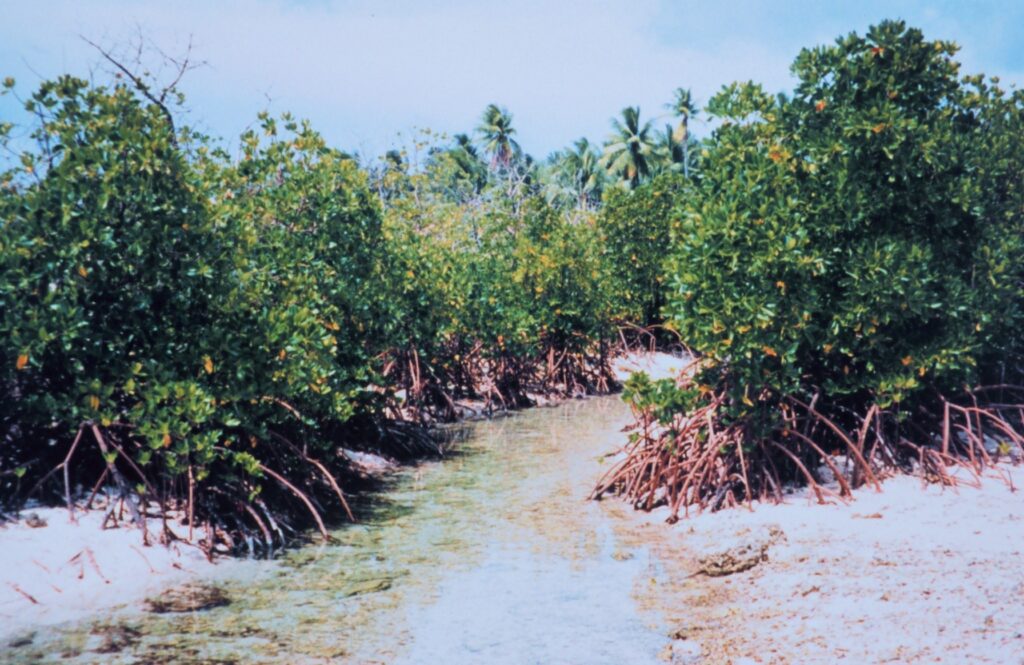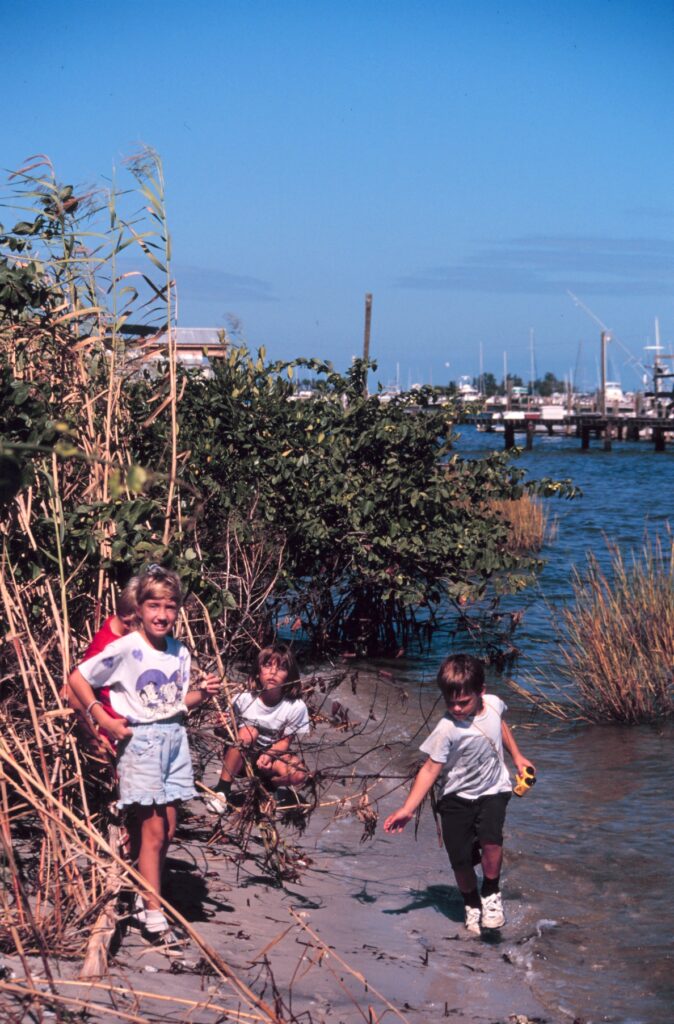If you have walked through a tropical beach and seen dense, matted trees, their roots protruding up through the water, you have likely seen mangroves. These unique ecosystems carpet tropical and subtropical coastlines around the globe, ranging from Florida and the Caribbean across Southeast Asia and Africa. Though perhaps not flashy looking, like coral reefs or seagrass beds, mangrove swamps play an important role in the overall health of our oceans and the stability of coastlines. Why, then, do mangrove swamps matter, and what risk do mangrove swamps now face? We will only know if we first understand the biology and ecology of mangrove swamps.

https://www.noaa.gov/media/digital-collections-photo/line0006jpg
why are mangroves so important?
Mangrove trees and shrubs can tolerate salt and live in the intertidal zone—the place where land and sea converge. Most plants cannot tolerate salty, low-oxygen soils, but mangrove plants have special adaptations. Some, for instance, have a special root called a pneumatophore, which grows up through the mud like a snorkel, so the trees can breathe at low oxygen levels. Their concentrated root systems, besides securing them in soft ground, provide nurseries for millions of marine creatures, young fish, crab, and shrimp included. Mangrove forests, in effect, act as safety belts for the land and refuges for the sea. One of mangroves’ key ecological services is coastal protection. Their dense root systems absorb wave energy, reducing erosion and shielding coastal communities from storm waves and hurricanes. Mangroves are likewise carbon sinks—storing huge amounts of carbon in their soils and biomass, through a mechanism of so-called “blue carbon” sequestration. They thus become valuable allies in the fight against climate change. Mangroves, in turn, feed biodiversity, habitat for species ranging from migratory birds roosting in their trees to reef fish sheltering in their roots before moving on into the open sea.
Volunteers plant mangrove propagules at the shoreline of Indian River Lagoon. (Image credit: NOAA Restoration Center, Mike Devany & Marine Resource Council)
https://www.noaa.gov/media/digital-collections-photo/r0008719jpg
Sadly, mangrove forests are under threat globally. Human activities such as coastal development, aquaculture, and logging have led to mass clearing of mangrove forests. Climate change is also a danger since rising sea levels and altered rainfall patterns affect their delicate balance of freshwater and salt. When mangrove forests become cleared, we lose not only a valuable storm and flood buffer, but huge stored carbon is released into the air, speeding up global warming.
Despite these challenges, there is hope. Conservation and restoration projects are on the rise, with communities and governments replanting mangroves and protecting existing forests. These efforts not only safeguard biodiversity but also enhance the resilience of coastal populations facing the impacts of climate change. By valuing and preserving mangroves, we protect not just a unique ecosystem, but also the countless services they provide to both people and the planet.
